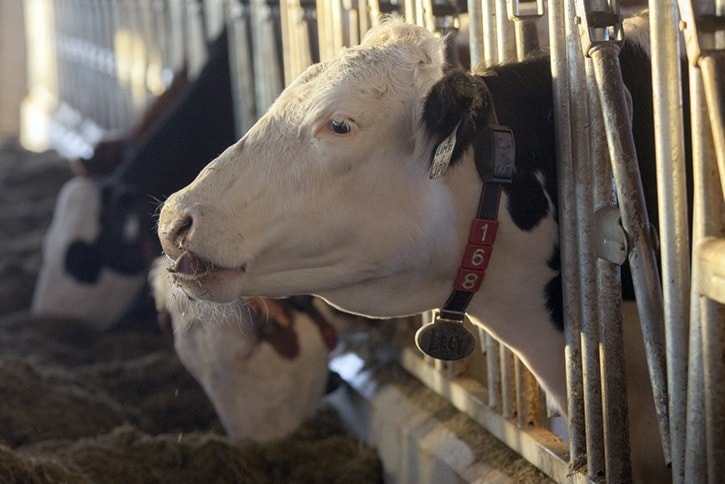Douglas Haustein started his dairy farm with only five Holstein cows in 1974, with the herd growing to 50 milking cows by 2003.
"By 2005 both diaries, that is my farm and my daughter Cremona and her husband Cornel Primrose's farm were looking for better and profitable cows to milk," said Haustein. "That's when we decided to make a transition and we both quit using Holstein in our breeding programs and went 100 per cent Fleckvieh to crossbreed our existing Holstein cows."
Barbarian Fleckvieh is from Germany, but originally came from Switzerland's Simmental cattle, and in North America they are only recognized as the milking Simmental, explains Haustein.
"We use semen from a stud station in southern Germany, to which John Popp of Manitoba is the North American distributor, and Cremona Primrose is the Alberta distributor," explained Haustein.
"With the Fleckvieh cow hoofs and feet being stronger, there is far less hoof trimming or foot diseases, besides this breed's cow udder has better ligament suspension, so that the udder does not get large and swing from side to side when the cow walks."
This means the Holstein cow will have to be shipped for slaughter earlier in life than the Fleckvieh, said Haustein.
"The longer a cow stays in the herd, the more milk she will produce, therefore the more money is earned from her," said Haustein. "Also, the Fleckvieh cow has a better reproduction cycle, being able to cycle to get rebred in as little as 35 days from calving, whereas the Holstein takes about 90 days on average, this lets the cow to calve again in 12 months while for Holstein the average is about 14 months."
"To move from Holstein to the Fleckvieh breed was easy when we looked at all the various advantages," said Haustein.
"The Fleckvieh calves are stronger and more aggressive and fleshier, therefore brings a premium at the auction mart over Holstein calves, and because we raise the bull calves as steers feeding them up to the fat slaughter market, we get the same price as the beef breeds do, but the Holstein fat steers are all always discounted $0.12 to $0.20 per pound, which is about $160 per animal, taking an extra two to three months of feed to get them fat," explained Haustein. "The only disadvantage Fleckvieh cows have is that they do not not produce as much milk as the Holstein, but with all of the other advantages, she becomes more profitable, and besides our veterinarian bill has been very low since compared to what it used to be."
The Hausteins didn't have to make any changes to their farm to accommodate the Fleckvieh breed.
"It has all been pluses, as we were able to increase the herd of 100 milking cows at present a lot faster because there were a lot less cull cows to sell, and we just kept cross breeding by artificial insemination," added Haustein. "Our farm has not been affected negatively in this economic downturn, because people need food to eat, and we supply both milk and meat; in fact, looking back we can only say how positively it has affected us with low, low interest rates for borrowing money, which was a great help for us in building the new dairy barn, Canada's first aerobic flush barn."
